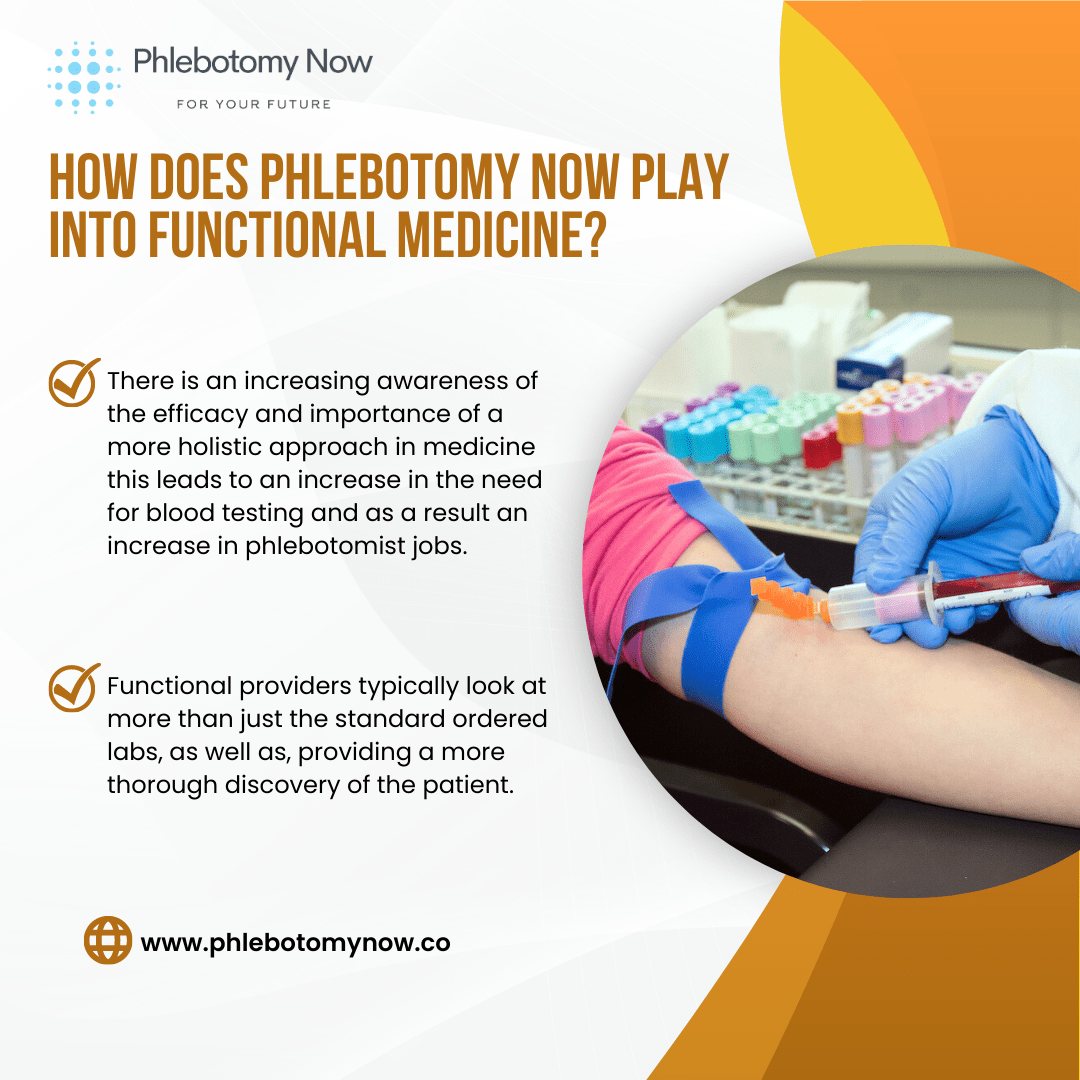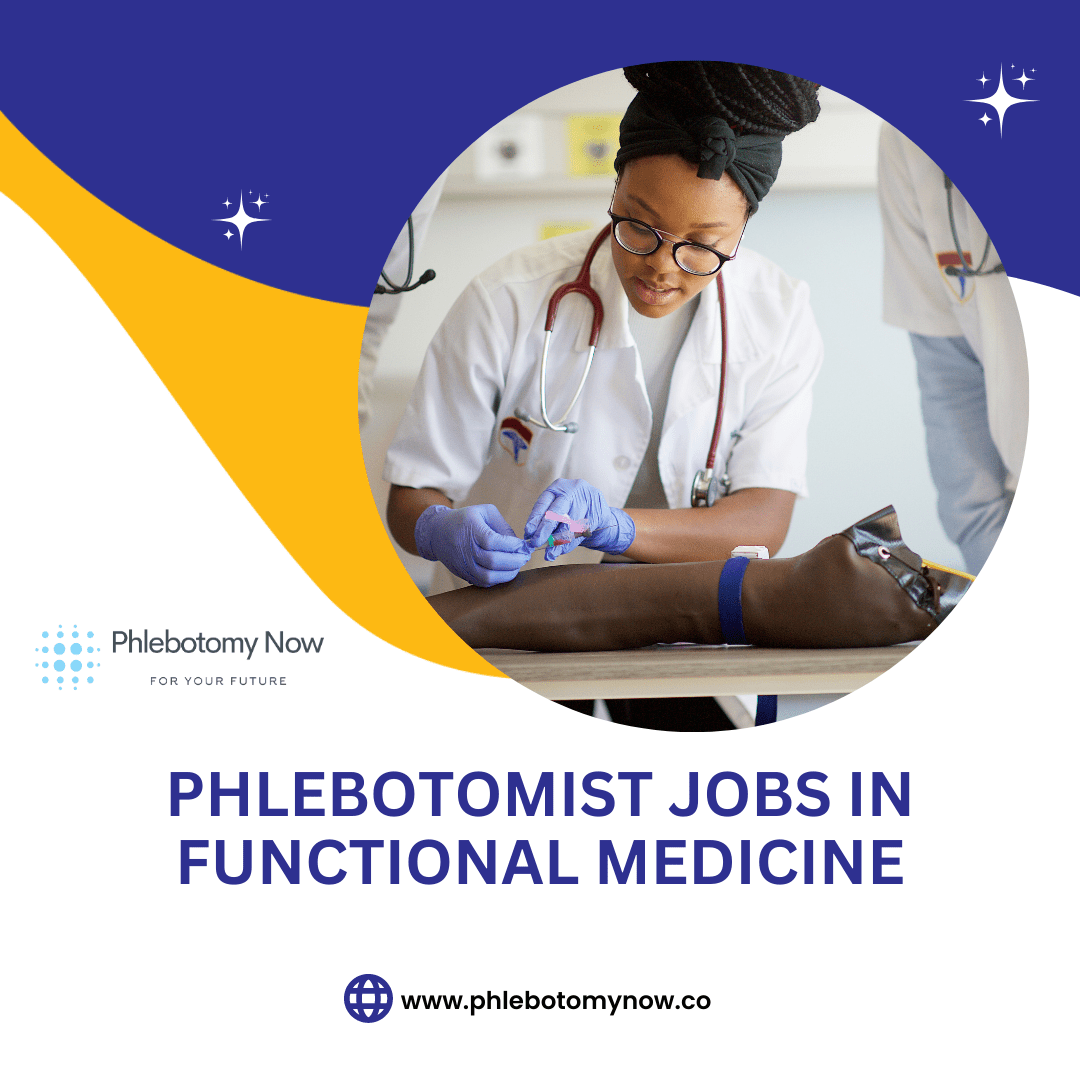How does Phlebotomy Now play into Functional Medicine?
There is an increasing awareness of the efficacy and importance of a more holistic approach in medicine this leads to an increase in the need for blood testing and as a result an increase in phlebotomist jobs.

How does Phlebotomy Now play into Functional Medicine?
Photo by Sara Bakhshi on Unsplash
Holistic Medicine…?
Whether you call this integrative medicine, functional medicine, eastern medicine, or just a new refined approach that is based on peer-reviewed science and a desire to look at the individual as a whole vs the standard ‘one size fits all’ approach… A common factor amongst the different approaches is the need for additional blood testing to get to the root of the problem.
Symptoms vs. Cause
In traditional medicine and standard blood work, there is a set range for levels in which diseases are diagnosed based on whether those ranges are out of the ‘normal’ limits. Oftentimes, if ranges are within the normal limits but on the lower side of normal, treatment is not provided because they are ‘within the normal limits’. Furthermore, in traditional medicine is it common for a patient that is experiencing symptoms to be given treatment for the symptoms without further discovery into what is actually causing the symptoms.
In functional medicine the objective is to find what is causing the symptoms and treat the cause not the symptom.
There is more of an emphasis on finding the healthy range for the individual vs the ‘standard limits’. What is a healthy limit for one person may not be a healthy limit for the next. — Says Dr. Kessmann, a leader in functional medicine
Functional providers typically look at more than just the standard ordered labs, as well as, providing a more thorough discovery of the patient. Oftentimes these tests include stool samples, urinalysis, heavy metals testing, comprehensive hormone testing, micronutrients testing, adrenal stress hormone profiles and much, much more.
This increase in testing, in many cases, requires an increase in the number of certified phlebotomy technicians required. This new approach also increases the frequency of blood draws.
Photo by Nguyễn Hiệp on Unsplash
Increasing Demand for Certified Phlebotomists

Increasing Demand for Certified Phlebotomists
At Phlebotomy Now we aim to provide efficient and proficient education to enable those seeking a change in their career to meet the demand for Certified Phlebotomists in the ever-changing and ever-growing medical field. As the need for additional testing rises, so does the need for those trained to perform blood draw techniques to keep up with the demand of providers that are helping individuals get to the true cause of their underlying conditions.
In functional medicine not only are there more types of testing available but the frequency and range of testing is increased. A patient undergoing testing will oftentimes interact with a phlebotomist as much as the physician. The ability to test and measure an individual’s optimal ranges and track where they are in correspondence to treatment depends upon the availability of qualified phlebotomy technicians.
Phlebotomy Technicians and scientific advancements are allowing doctors and scientists to gain more information and as a result, deliver a more thorough and individualized treatment to their patients. Precision and accuracy are extremely important, as the results are relied upon by the physician to diagnose, treat, and monitor each patient.
Safety is also of the utmost importance to prevent the spreading of disease, so high standards, and training are equally imperative. Phlebotomists work in hospitals, public health facilities, health clinics, wellness centers, and more recently an avenue in which to work for yourself by doing in-home or travel phlebotomy. The need for National Phlebotomy Certification Training is growing.
In our phlebotomy training, you will learn how to safely and properly perform venipuncture while observing safety protocols and providing the best level of care to the patients. If you’ve ever had blood drawn, you know that it can be painful, but can also sometimes be virtually painless.
You can register for one of our classes here.







